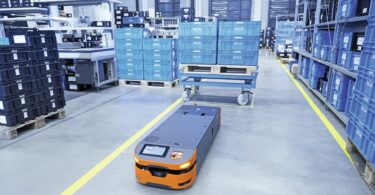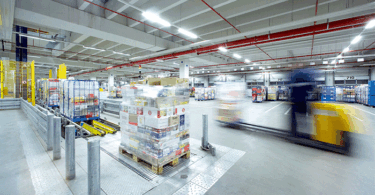Level sensors are an important part of the manufacturing processes in many industries—from food and beverage to pharmaceutical, agricultural to automotive. In many cases, more than one technology can be used to solve the same level sensing application; however, for tougher applications, a single technology often stands out as the best choice. Traditionally challenging substances for level measurement include foamy liquids, highly viscous fluids, and solids.
This blog post explains the ideal technologies to solve each of these challenges.
Guided Wave Radar for Foamy Liquids
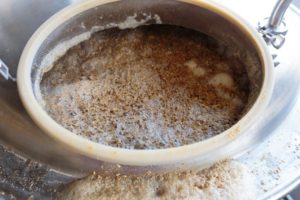 It can be especially challenging to accurately measure the level of liquids that produce foam (e.g., soap, beer, or caustic blends). For example, when using ultrasonic technology, the presence of foam absorbs the signal, preventing the sensor from accurately detecting level.
It can be especially challenging to accurately measure the level of liquids that produce foam (e.g., soap, beer, or caustic blends). For example, when using ultrasonic technology, the presence of foam absorbs the signal, preventing the sensor from accurately detecting level.
Guided wave radar technology is a top-down, direct measurement technology based on the time domain reflectometry (TDR) principle that measures the distance to the product surface. This is accomplished by sending a microwave signal down a probe and measuring the amount of time it takes for the signal to be reflected by the target (surface of medium) and returned to the sender.
Traditionally, guided wave radar devices also struggled to provide an accurate measurement in foamy applications but new advancements have enabled accurate level measurement in foamy applications. The key to success is sensor intelligence.
Special algorithms in the sensor adjust for the dielectric constant (Dk) value of the foam and medium as well as calibrate the sensor to the change in the time of flight (TOF) signal. An algorithm that takes both of these properties (Dk and TOF principles) into account will allow for successful and accurate level measurement in foamy applications.
Ultrasonic Technology for Highly Viscous Fluids
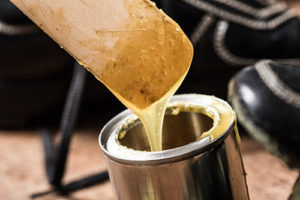 Highly viscous fluids like honey, industrial adhesives, and sewage pose an enormous challenge to any level sensing technology where the device comes in contact with the fluid.
Highly viscous fluids like honey, industrial adhesives, and sewage pose an enormous challenge to any level sensing technology where the device comes in contact with the fluid.
Ultrasonic devices gauge levels by measuring the duration and intensity of echoes from short bursts of energy. Because ultrasonic level sensors are non-contact, there is a reduced risk of measurement disruption due to the accumulation of residue. Ultrasonic sensors are also ideal for measuring caustic and acidic mediums (for example, cleaning solutions that might erode metal).
When selecting an ultrasonic device, however, it is important to consider whether the sightline between the device and the liquid in the tank is obstructed by mesh, grates, chains, or other instrumentation. If there is an obstruction in the foreground, it is essential to choose an ultrasonic level sensor that features foreground suppression that can filter out interference in order to maintain accurate measurement.
Tuning Forks for Solid Level Measurement
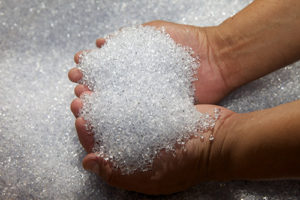 Finally, solid level can be very difficult for many level sensing technologies to detect. For one, solid products are often extremely dusty (for example, bulk powders or wood chips). The presence of dust can degrade the signal strength of many level sensing technologies, including ultrasonic.
Finally, solid level can be very difficult for many level sensing technologies to detect. For one, solid products are often extremely dusty (for example, bulk powders or wood chips). The presence of dust can degrade the signal strength of many level sensing technologies, including ultrasonic.
In addition, clear solids—like plastic pellets for injection molding—can scatter the light from a laser-based sensor, leading to false measurements. Tuning forks are the top choice for sensing solid level because they rely on resonant frequency technology.
The presence of material contacting the fork causes the frequency to change, indicating that the material has reached a certain level. A tuning fork offers point level detection only, which means that instead of detecting a range of levels, a single tuning fork simply detects whether or not the substance has reached a certain point.




